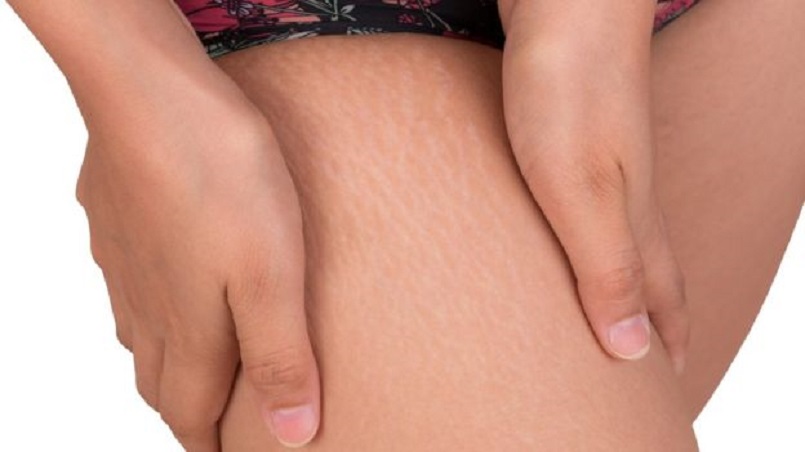
Model Chrissy Teigen has been praised by fans after posting a photo on Twitter showing off her stretch marks.
The mum-of-one took to social media to show an image of her inner thigh with the caption "Whatevs", which has been retweeted 19,000 times and received 148,000 likes.
Her photo was welcomed by other Twitter users who shared posts of their own stretch marks or replied with positive messages.
Singer SuCh wrote: "Stretch marks develop when tremendous growth happen in a short period of time. They're a source of pride, embrace them."
Marisa V praised the model for posting the photo, adding: "Thank you for being real, we need more public figures who aren't afraid to show their perfect imperfections."
Keesha Turner wrote: "Thx, need to show this to my 14 y/o who's had them for a few yrs. She's beautiful, you all too!"
Ms Teigen, who has a daughter with singer John Legend, went on to say she did not post the photo for "praise" and told her followers she liked the pattern and "they're so soft".
She has previously spoken openly about her stretch marks - sometimes referred to by women as their 'tiger stripes'.
In 2015 she pledged to never use photoshop imaging apps again because "we've forgot what normal people look like now".
So what exactly are stretch marks?
Dr Sweta Rai, from the British Association of Dermatologists, explains:
Stretch marks are visible lines or marks on the skin that occur when it is stretched, such as during rapid weight gain, which causes the elastic fibres to break. They are effectively a rupture of collagen that is visible on the skin's surface.
Why do people get them?
Skin has a natural level of elasticity, however, once it is stretched past this the elastic fibres break. Stretch marks can occur to teenagers experiencing a growth spurt, during rapid weight gain, pregnancy or when the skin is stretched a great deal in a short period of time.
Do they affect only women?
They mainly affect women but can also occur in teenagers and men.
Do you always get them in pregnancy?
A woman's likelihood of getting stretch marks during pregnancy is partly determined by genetic factors but also by how big she grows.
Mothers expecting more than one baby are more likely to develop stretch marks than in a single pregnancy. They are not an inevitable consequence of pregnancy, however, it is very common, affecting around 90% of women.
What is the emotional impact?
It is very important not to trivialise conditions like stretch marks. Like many disfiguring skin conditions or scars, stretch marks can have a lasting psychological, or emotional impact.
They may cause people to feel self-conscious, socially anxious, and can lower self-confidence, increase social isolation, and lead to body image issues.
This can be particularly the case when in social situations where stretch marks might be on display, such as at the swimming pool or at the start of a new intimate relationship.
What can prevent you getting them?
Unfortunately studies have shown that it is very hard to prevent stretch marks. Despite a large number of products claiming they can helping prevent them, there is very little evidence of their effectiveness.
Can they disappear?
Gradually, stretch marks tend to fade from red or purple to thinner white or silver lines that are less noticeable. Some will disappear altogether. It can however take a year or longer for the marks to fade.
Do moisturising creams help?
Moisturising creams will not prevent the rupturing of the collagen so will not prevent stretch marks, but may make the skin look and feel smoother.
It is probably not worth investing large sums of money into lotions with the belief that these will rid you of stretch marks - it is best to wait and see if they disappear of their own accord.
What treatment is available?
If your stretch marks are a problem, you can consult a dermatologist to discuss possible treatments. However, this is likely to be a service you will pay for as this is a cosmetic concern not funded within the NHS.
There are some effective treatments for stretch marks if treated within a few months of development, for example certain laser treatments. The treatments available will differ according to the maturity of your stretch marks and your skin type.
